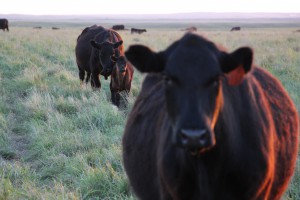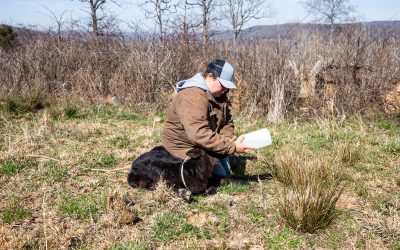No sick animals, ever
Sick animals are what let a veterinarian put food on the table, right? No animals to treat, no paycheck.
Well, that’s not the way Purdue University’s Dr. Mark Hilton sees it.
Rather than visit a ranch or a feedyard, I went on a trip of another kind (via video interview gathered earlier this year) and learned from one of the best.
 “I tell my freshman veterinary students their very first lecture, on introduction to the beef industry, my goal as a food animal veterinarian is to never see a sick animal,” he says.
“I tell my freshman veterinary students their very first lecture, on introduction to the beef industry, my goal as a food animal veterinarian is to never see a sick animal,” he says.
Enter the good doctor’s “dream team.”
As a veterinarian, he is on the roster, but also wants a nutritionist to help produce calves with the best rate of gain. A grazing specialist to promote pasture health. And even a marketing expert, because what good is value-added beef if your returns don’t exceed your input?
All of the above promote healthy and profitable calves from the very beginning.
“The nutrition of the dam when that calf’s in utero starts the clock,” Mark says. “So the placenta develops in the first few weeks of conception, and if the placenta doesn’t develop correctly because of poor nutrition of the dam, that calf is set up for the potential for health problems later on in his life.”
After a calf is born, through weaning, preconditioning and its first days in the feedlot, the veterinarian still stresses nutrition, nutrition, nutrition. Especially for those calves that have never been introduced to high-starch feedstuffs, such as corn silage.
“More cattle are ruined the first two weeks on feed in the feedlot than any other time of their life,” Mark says, quoting a friend in the business. “We know absolutely that subclinical acidosis decreases the immune system. And then that calf with the decreased immune system is the one that gets sick from bovine respiratory disease.”
There are other points to watch: calving environment, preconditioning and the importance of retaining ownership in a feedyard. All of which, put together and including the “dream team,” can help lower sickness rates in cattle, and that’s every producer’s dream.
Now if only I had a “dream team” following me around….
~Hannah
 Although summer intern Hannah Johlman was born in northeast Kansas and is now a senior studying ag communications and animal sciences at Kansas State University, she claims Sheridan, Wyo., as her home. Hannah tributes her grandfather and uncle involved in farming and veterinary medicine as her largest ag influencers, inspiring her to the career path she has chosen.
Although summer intern Hannah Johlman was born in northeast Kansas and is now a senior studying ag communications and animal sciences at Kansas State University, she claims Sheridan, Wyo., as her home. Hannah tributes her grandfather and uncle involved in farming and veterinary medicine as her largest ag influencers, inspiring her to the career path she has chosen.
You may also like
A scours change
Just like regular maintenance on your vehicle, prevention is the best way to ward off scours in your cow-calf herd. But sometimes the best treatment plans fail, with lasting effects on calf performance. That’s why ranchers should try to get ahead of the problem.
Senses and sense
Humans developed over millennia to hunt and herd. When it’s time to move animals, instincts send us out with a purpose but sometimes little thought to how our aggressive behavior affects what they do. Stepping into a cattle pen, we naturally act the predator, manipulating where animals go. But good handling practices should turn us into leaders, says Kip Lukasiewicz.
Fine-tuned engines
Mineral nutrition plays an important role in every function of cattle – from health, to reproductive performance, to day-to-day activities. However, mineral deficiencies are hard to detect base on physical traits. Supplementation programs can help ensure your cattle are getting the minerals needed to perform their best.



